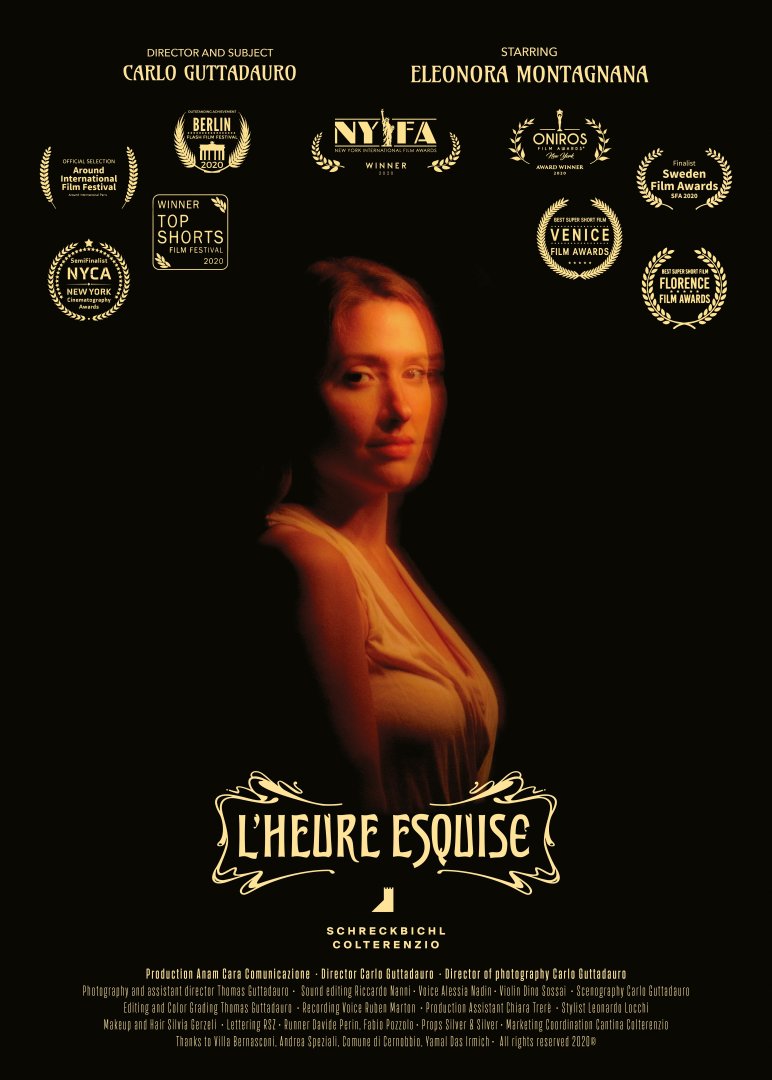Lafóa is for Colterenzio more than just a wine range. Lafóa is the story of the winery, and tells about its developing path throughout these years. For this reason, Colterenzio today, wants to celebrate Lafoa as a work of art, in an artistic way, reflecting how this all came to life.
The magical hour of Lafóa
In the film, a red ball of wool runs through the plot like a red thread. It represents the time. The time that someone has experienced, the time in which one lives and the past time, which one has lived. Time is often perceived as something very static: it is divided into hours, days, years, epochs, but it is always in motion. It is something flowing that cannot be divided, cannot be separated, but continues to run.
This is the same with Lafóa: a project in constant evolution. The film begins with a woman looking back at the time she has lived through. She thinks about everything she has experienced and about certain moments of her past life, which began in the Art Nouveau time. At the end, the lady steps down the stairs to continue her way. She turns around to catch a last glimpse of herself and looking into the golden Lafóa label, she recognizes herself as the center of it. All the filming locations were carefully chosen. Most of the recording was made at Villa Bernasconi in Cernobbio on the coast of Lake Como. The residence was built between 1905 and 1906 under the direction of the Italian architect Alfredo Campanini and is named after its owner, the Milanese engineer Davide Bernasconi. The villa is now one of the most important Art Nouveau buildings in Italy and is a museum.
The scenes in the vineyard were filmed in Eppan Berg (Appiano Monte), in the vineyard of the winegrower Peter von Hellberg, a member grower of Colterenzio. Due to its position, high up in the valley, it overlooks the wine area of Appiano and so represents the high-quality wines and the intuition that Colterenzio winery had, at the end of the 1980s, to launch the Lafóa quality line.
The dark scenes, in which only candles illuminate the room, take place in the barrique cellar of Colterenzio. They symbolize the search for one's own self, one's roots. The roots of the Lafóa wine line lie in the cellars of Colterenzio, therefore the barrique cellar was the most suitable place for these scenes. The perfect musical setting is provided by two renowned artists of the opera world: Alessia Nadin, mezzo-soprano and Dino Sossai, violinist at famous opera house "La Scala" in Milan. They impress with a new interpretation of Reynaldo Hahn's "L'heure exquise", the enchanting hour.
The new film attracted the attention of several international short film festivals. The film won five international festivals. Among others, it was awarded at the "Florence Film Awards" and at the "Venice Film Awards" in the category "best super short film". At the "Oniros Film Awards" in New York and the "New York International Film Awards (NYIFA)" it was awarded "best commercial". It was also selected at the world's leading online film festival "Top Shorts".
In numerous other festivals the film achieved excellent rankings.

Statements
of the film director
Carlo Guttadauro, director:
"As a director, I wanted to emphasize two aspects in particular: the spirit of the era and the time in which we live now. The costumes and the scenery are based on the style of that period, while the endless moment of absolute happiness, represents what we consciously experience. In a moment when we enjoy a glass of Lafóa with its intense bouquet of intense fruity notes, no matter where we are, we forget everything around us."
of the the leading actress
Eleonora Montagnana, starring:
"My role as a supporting actress in the short film 'L'Heure Esquise' (because for me the main "actors" were the excellent wines of Colterenzio) took me on an exciting journey into the world of the senses as a violinist and as an actress. It was a synesthetic, almost surreal experience, first to immerse myself in the glamorous 1930s, only to find myself later in the magnificent vineyards of Alto Adige."
